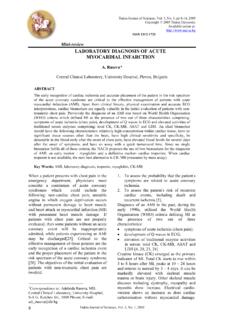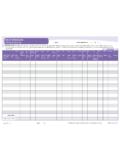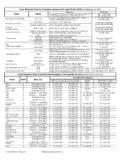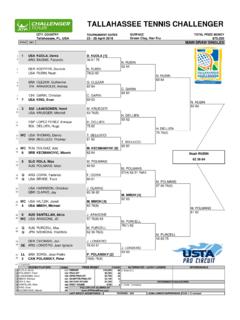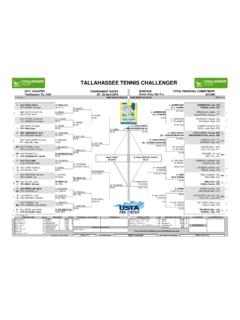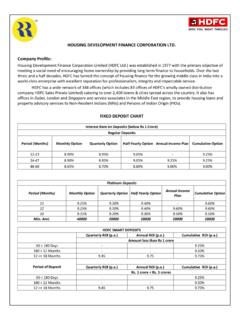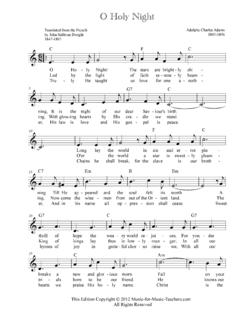Transcription of DIFFERENCES IN CHEMICAL COMPOSITION …
1 Bulgarian Journal of Veterinary Medicine (2008), 11, No 1, 3 12. DIFFERENCES IN CHEMICAL COMPOSITION between . COW COLOSTRUM AND MILK. I. PENCHEV GEORGIEV. Department of Pharmacology, Animal Physiology and Physiological Chemistry, Faculty of Veterinary Medicine, Trakia University, Stara Zagora, Bulgaria Summary Penchev Georgiev, I., 2008. DIFFERENCES in CHEMICAL COMPOSITION between cow colostrum and milk. Bulg. J. Vet. Med., 11, No 1, 3 12. The aim of the present paper is to review the DIFFERENCES in CHEMICAL COMPOSITION between colostrum and milk in cows. The concentrations of many nutrients (proteins, vitamins, minerals etc.) and bio- logically active substances (immunoglobulins, enzymes, hormones, growth factors etc.) are many times higher in colostrum than in milk.
2 A special attention is given to insulin-like growth factors (IGF-1 and IGF-2) the predominant growth factors in the colostrum of cows (especially in the first portions) unlike many other species and men. Furthermore, IGF-1 and IGF-2 are the most important factors stimulating tissue and body growth and development in newborn calves. Key words: CHEMICAL COMPOSITION , colostrum, cows, insulin-like growth factors, milk INTRODUCTION. The formation of colostrum in cow's ud- is also considered that the high concentra- der occurs during the first 5 7 days after tions of growth factors in cow colostrum calving. Its COMPOSITION is similar to that (mainly insulin-like growth factors 1 and of blood and differs significantly from 2 IGF-1 and IGF-2) and hormones (in- milk.)
3 Colostrum contains both nutrients sulin) control the growth and development (proteins, fats, lactose, essential fatty of gastrointestinal tract and contribute for acids and amino acids) and non-nutrients the functional maturation of the organism (biologically active substances). This is during the first days after birth (Blum &. the first food for neonates after the partu- Hammon, 2000; Blum & Baumrucker, rition that provides them with all neces- 2002; Sauter et al., 2004; Blum, 2006). sary nutrients. Also, colostrum is particu- The aim of the present paper was to larly important for the passive immuniza- review and analyze the available informa- tion of the newborn, as the combination of tion upon the DIFFERENCES in the composi- its various specific (immunoglobulins, Ig) tion between cow colostrum and milk.
4 And non-specific (humoral and cellular). antibacterial factors passes in the off- CHEMICAL COMPOSITION OF CO- spring and largely supports their protec- LOSTRUM AND MILK IN COWS. tion against infections during the first days after birth (Tomov, 1984; Medvezki, Compared to milk, colostrum contains 1989; Iliev & Tomov, 1992; Blum & higher levels of proteins lactalbumins, Hammon, 2000; Playford et al., 2000). It DIFFERENCES in CHEMICAL COMPOSITION between cow colostrum and milk lactoglobulins and especially immu- why calves are born with very weak noglobulins (IgG1, IgG2, IgM, IgA), pep- mechanisms of defense and are particu- tides (lactoferrin, transferrin), hormones larly susceptible to various infections. (insulin, prolactin, thyroid hormones, cor- According to numerous data, blood serum tisol), growth factors, prostaglandins, en- of calves prior to suckling colostrum lacks zymes, cytokines (tumor necrosis factor- Ig, or contains only traces of Ig, whereas ), acute-phase proteins ( 1-glycoprotein), the bactericidal and lysozyme activities nucleotides, polyamines, minerals (iron, and the alternative pathway of comple- magnesium and sodium salts), (pro)vita- ment activation (APCA) are very low or mins: especially -carotene, vitamins A, absent (Tomov, 1984; Gerov et al.)
5 , 1987;. Е, D, B, cell elements lymphocytes, Iliev, 1988; Tomov et al., 1989; Levieux, monocytes, epithelial cells etc. (Gerov et 1999). Therefore, the intake of colostrum al., 1987; Medvezki, 1989; Blum & in the first hours after birth is extremely Hammon, 2000; Ontsouka et al., 2003; important for increasing the specific and Blum, 2006). The concentrations of most non-specific resistance of calves against ingredients, especially those of immu- harmful pathogens, causing alimentary, noglobulins (Ig) and growth factors, are respiratory and other disorders in the the highest in the first portions colostrum postnatal period (Kirk, 2005). immediately after calving, and thereafter Calves obtain antibodies ready-to-use are rapidly decreasing (Rauprich et al.
6 , under the form of Ig, mainly from the 2000a; 2000b; Blum & Hammon, 2000; IgG1, IgG2, IgM and IgА classes with co- Playford et al., 2000; Kirk, 2005; Blum, lostrum the so-called colostrum antibo- 2006). It should be noted that Ig account dies, bound to the globulin protein frac- for more than 50% of the total amount of tion (Iliev, 1988; Medvezki, 1989; Tomov colostrum proteins and contain almost all et al., 1989; Blum, 2006). Colostrum antibodies, encountered in maternal blood globulins are identical to those of mater- (Tomov, 1984), about 90% of colostrum nal blood serum and during the first days Ig being from the IgG1 type. At the same of life, pass in the blood of calves through time, the contents of lactose and casein in alimentary tract epithelium (Medvezki, colostrum are lower than those in milk 1989).
7 According to Tomov et al. (1989), (Ontsouka et al., 2003). during the first hours after birth, IgM are Many of non-nutrient biologically absorbed more rapidly whereas IgG are active substances of colostrum come di- mostly retained on the apical surface of rectly from the blood, for instance, IgG, the intestinal mucous coat, and exert there somatotropin, prolactin, insulin and glu- a local protective function. Also, there is a cagon. Other non-nutrients are locally correlation between blood serum Ig of produced in the udder from lactocytes and newborn calves and both peripheral blood the stroma. cortisol and maternal blood cortisol, con- Both the nutritive and immune-related firming the view that in physiological functions of colostrum are essential for concentrations, glucocorticoids stimulate newborn calves.
8 Experimental data sug- antibody formation (Tomov et al., 1989). gest that unlike that in women, the pla- The earliest colostrum intake is of centa of ruminants is not permeable to primary importance for the passive immu- macromolecules such as Ig from the ma- nization of calves, when colostrum's value ternal blood (Мedvezki, 1989). That is is the most complete from biological point 4 BJVM, 11, No 1. I. Penchev Georgiev of view (high titre of colostrum Ig, high varies within a very wide range in the dif- lysozyme, bactericidal and APCA activi- ferent cattle breeds from 18 mg/mL tо ties, high content of growth factors), the 92 mg/mL (Kiddy et al., 1971, McGuire permeability of the epithelium of small et al., 1983). According to Levieux intestine is the highest, and the acidity of (1999), the colostrum IgG level in Hol- abomasum content the lowest due to the stein-Friesian cattle immediately after the lack of hydrochloric acid (Iliev, 1988; parturition was about 60 mg/mL, in Hol- Gueorguiev et al.)
9 , 1996; Kirk, 2005). Re- stein 50 mg/mL, and in meat-type gardless of the fact that the content of breeds was higher 100 mg/mL. It should biologically active substances in colos- be noted that IgG1 concentration de- trum is preserved relatively high up for creases twice in every subsequent milking 24 36 hours, it is most appropriate that and by the 7th day, is about 1 mg/mL, the intake of first colostrum occurs within reaching normal milk values by the 2nd 6 hours after calving, when Ig concentra- 3rd month: mg/mL (Levieux, tions are the highest (Kirk, 2005). Iliev 1999). IgG2 in colostrum varies from (1988) observed maximum values of IgG, mg/mL tо mg/mL, whereas in normal vitamin A, carotene and vitamin C in the milk its concentration is about first portions of colostrum immediately mg/mL.
10 After the parturition, this high level being The class M immunoglobulins (IgM). persistent for 24 hours, and thereafter de- in colostrum vary between 5 mg/mL and creasing by the 5th and the 12th day. mg/mL whereas in milk their concen- Ig are absorbed by small intestine mu- trations are mg/mL (Levieux, cosa by pinocytosis for a relatively short 1999). Colostrum and milk IgA levels are time (8 12 hours after birth). Then, the and 4 mg/mL, respectively. The con- permeability of intestinal mucosa in calves tent of -lactoglobulin and -lactoglobulin strongly decreased and becomes entirely in colostrum is also higher than in milk impermeable after the 36th hour, in lambs (14 and 2 mg/mL vs and mg/mL, after the 3rd day (Tomov, 1984; Gerov, respectively).)
